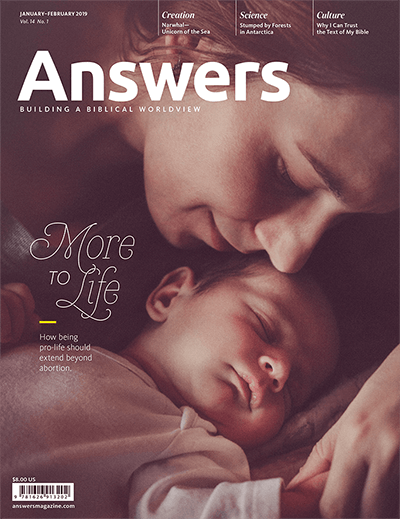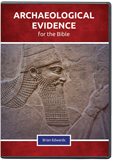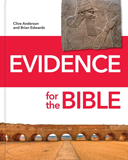Trusting the Text
Without the original texts of the Bible in our hands, how can we be sure our surviving copies don’t contain lots of mistakes?
Why does my reference Bible have notes at the bottom of the page that say things like “Some manuscripts add . . .” or “some early manuscripts omit . . .”?
This is not a minor issue. Headed by Bart Ehrman, a growing movement claims that we cannot be sure what the original Bible said.
First off, there is no other ancient literature so well attested by so many manuscripts (handwritten copies of the original text) over such a length of time, as the Christian’s Bible. But since we don’t have the originals, written by Isaiah or Paul for example, would the many copies made over the years introduce thousands of mistakes, as Erhman and others believe?
Let’s check it out so you know what to say next time someone makes this claim. We’ll start with the Old Testament.
The Text of the Old Testament
The Jewish scribes were full-time copyists. They considered their Scriptures to be a most sacred text. Transcribing them was a hallowed duty and an awesome responsibility that they carried out with meticulous care. They counted every word and letter in each line. As soon as an accurate copy had been carefully checked, the older copy was never used again in case someone might add their own text to a damaged area.
Hebrew, the language most of the Old Testament was written in, originally had no vowels. Around AD 900, Jewish scholars added vowels. Their text, known as the Masoretic Text, is the one used today for all our translations. However, the time of Isaiah (700 BC) to the Masoretic Text (900 AD) is around 1,600 years. Plenty of time for errors to creep in?
In 1947 the Dead Sea Scrolls were discovered, and a complete scroll of Isaiah was among them dated to around 150 BC. That reduced the time between Isaiah and the Masoretes by half. Apart from spelling, grammar, and punctuation—which are not errors—there is overwhelming agreement between the Isaiah Dead Sea scroll and the Masoretic Text, 900 years later. The English Standard Version allows only 9 places where the translators preferred the Dead Sea text over the Masoretic Text—that’s 9 small preferences in 1,286 verses of our English translation of Isaiah. And not one of these introduces any factual or doctrinal error.
The outstanding scholar F. F. Bruce concluded that the evidence from the Dead Sea Scrolls confirms what we had already good reason to believe: “The Jewish scribes of the early Christian centuries copied and recopied the text of the Hebrew Bible with the utmost fidelity” (Second Thoughts on the Dead Sea Scrolls, 1956, p. 62).
The Greek translation of the Hebrew Scriptures, completed more than a century before Christ and known as the Septuagint, is an additional source for confirming the Old Testament text. But it is a translation, not an original. Again, there are differences, but these are typically quite easy to resolve.
The Text of the New Testament
The books of the New Testament were all written before the end of the first century. That was the conclusion even of the theologically liberal scholar John A. T. Robinson in his standard, Redating the New Testament (SCM Press, 1976). The young churches were eager to get copies of the Gospels, Paul’s letters, and the rest. For example, Clement of Rome, who was martyred around AD 95, wrote to the church at Corinth to commend Paul’s letter to Rome, which he assumed they possessed (1 Clement 47).
To date there are over 5,800 Greek texts of all or part of the New Testament. The earliest copies of the complete New Testament go back to the fourth century AD. However, separate books and fragments are much earlier than this. Some date as early as the first half of the second century. In addition, the New Testament books were translated very early into other languages (known as Versions); and we can compare our Bible with the extensive writing of the early Christian leaders, including some who quoted frequently from the Epistles and Gospels. All of this is source material to confirm the accuracy of our New Testament text.
Some estimate that altogether we have around 20,000 of these sources to check our text against. Daniel Wallace, director of the Center for the Study of New Testament Manuscripts, concludes, “Meaningful and viable variants . . . comprise less than 1% of all textual variants. Yet, even here, no cardinal belief is at stake.”
Finding the Best Text
Where some texts omit or add verses or words, it is the task of specialists to suggest which reading is closest to the original; there are reasonable criteria for this. Remember, the words that are in question do not amount to even a thousandth part of the whole New Testament. There are three “families” of Greek texts to consider.
First. More than 80% of Greek texts available for our New Testament date from around the ninth century AD. These are known as the Majority Text. In 1516 the Dutch scholar Erasmus published his edition of the Greek New Testament, which was significantly close to the Majority Text. By 1550 Stephanus issued his own Received Text, which was essentially Erasmus’ final text.
Second. In the nineteenth century, a few more complete texts of the New Testament were used that had not been available to Erasmus or Stephanus: principally codices (ancient manuscripts in book form rather than scrolls) Sinaiticus, Alexandrinus, and Vaticanus. These were dated to the fourth and fifth centuries AD. This made them much older than the Majority Text and were therefore assumed by some scholars, including Westcott and Hort, to be more reliable. This “family” became the basic text for many English translations. The Revised Version and Revised Standard Version are examples of translations based on this Greek text.
Third. Most evangelical scholars today follow a middle course and compare all the available texts to produce an Eclectic Text. The New International Version and the English Standard Version are examples based on this Greek.
Words You Can Trust
Finding out exactly what text most accurately represents the original is known as textual criticism. This is not a negative phrase; it just means to evaluate carefully. It is a highly specialized discipline. It does not affect our belief that the Word of God is without error, because inerrancy refers to the original text written by Moses, Isaiah, or Paul, for example. The differences between any of the copies is a tiny fraction of the whole. Check out those footnotes in any Gospel, and you will see how few and minor they are. On only rare occasions are they significant. No Christian doctrine depends upon a disputed verse, as even Ehrman acknowledged when he stated that “essential Christian beliefs are not affected by textual variants in the manuscript tradition of the New Testament” (Misquoting Jesus, 2005, p. 252).
In all the available New Testament manuscripts, we have exactly what God revealed to the first century writers. Apart from John 7:53–8:11 and Mark 16:9–20, the only differences are relatively minor variations in words or verses. We can therefore confidently claim that the Bible is the inerrant Word of God that has been incredibly well preserved through the centuries. We have many excellent and reliable translations.
It is helpful to remember that the great majority of differences between our various English translations are simply the translators’ preferences in the choice of the English words to render the same Greek or Hebrew word or phrase.
Note: For an accessible but more detailed discussion of this complex subject, see the author’s series of six books titled All You Need to Know About the Bible, particularly book 4, chapter 4 (DayOne Publications).
For anyone to claim that all we have in our Bible is a “close approximation” of the original text is wildly inaccurate. Sir Frederic Kenyon, director of the British Museum for 21 years, expressed confidence in the Bible text: “The Christian can take the whole Bible in his hand and say without fear or hesitation that he holds in it the true word of God, handed down without essential loss from generation to generation throughout the centuries” (Our Bible and the Ancient Manuscripts, 1895, p. 55).
All the evidence that has been gathered since Sir Frederic Kenyon wrote those words has reinforced his claim.
God’s Promise to Preserve His Word
The only place we can learn about eternal life is God’s Word, so the Lord has promised to preserve it to all generations.
The psalmist proclaimed, “Forever, O Lord, your word is firmly fixed in
the heavens
” (Psalm 119:89). But God’s Word also continues on the earth,
as the prophet Isaiah assured us, “The grass withers, the flower fades, but
the word of our God will stand forever
” (40:8).
Jesus Christ himself spoke of the preservation of his words: “Heaven
and earth will pass away, but my words will not pass away
” (Mark 13:31).
The frequent use of the Old Testament by Jesus and the apostles reveals their confidence that it had been preserved to their day.
To emphasize the permanence of his words, God warns anyone who tries to change them. You can find these warnings at the beginning, middle, and end of his revelation:
- “Everything that I command you, you shall be careful to do. You shall not add to it or take from it” (Deuteronomy 12:32).
- “Do not add to his words, lest he rebuke you and you be found a liar” (Proverbs 30:6).
- “If anyone adds to them, God will add to him the plagues described in this book, and if anyone takes away from the words of the book of this prophecy, God will take away his share in the tree of life and in the holy city” (Revelation 22:18–19).
God wants us to be confident, though all things are changing around us,
that his unchanging Word is in our hands. “The word of the Lord remains
forever
” (1 Peter 1:25).
Related Downloads
All You Need to Know About the Bible (Excerpt)
PDF DownloadAnswers Magazine
January–February 2019
An engineering feat that far surpasses landing a man on the moon is taking place all around us.
Browse Issue SubscribeRecommended Resources

Answers in Genesis is an apologetics ministry, dedicated to helping Christians defend their faith and proclaim the good news of Jesus Christ.
- Customer Service 800.778.3390
- © 2024 Answers in Genesis





